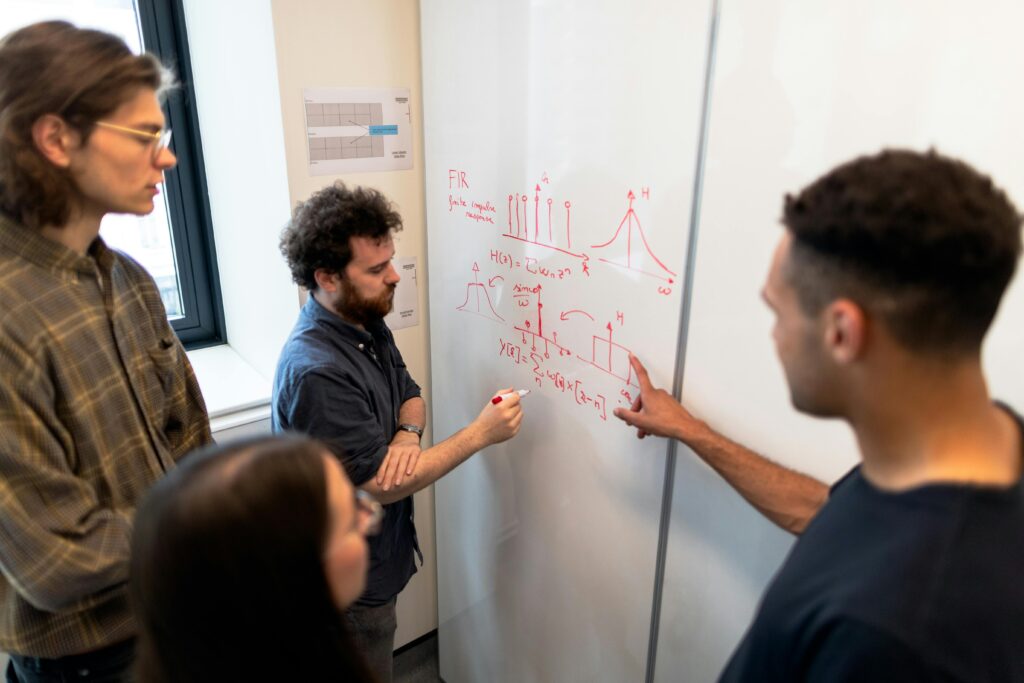Cloud computing is a revolutionary technology that has transformed the digital world. But how did we get here? This ultimate guide takes you on a journey through the history of cloud computing, from its humble beginnings to its current dominance in fields like AI, ML, and Data Science.

Understanding this timeline is crucial for professionals and students eager to excel in the tech industry. By the end of this article, you will get deep insights into how cloud computing has evolved, what role it played in shaping modern technology, and how it may redefine the future.
Introduction to Cloud Computing’s Evolution
Cloud computing’s roots are far deeper than most people realize. Long before the term became a buzzword, its foundation was being laid through distributed computing and shared resources. Today, the cloud powers everything from personal data storage to advanced machine learning algorithms.
This article breaks down the history of cloud computing in straightforward terms, making it easy for anyone to understand, no matter their level of technical knowledge. Whether you’re a student, a professional, or an entrepreneur, grasping this history offers important insights into the evolution of technology and its implications for the future.
We will also examine the influence of cloud computing on the Indian market, how it has improved businesses, and its role in fostering the advancement of innovative technologies. Join us in this detailed guide to discover its timeline, significant milestones, and what lies ahead.
A Detailed Timeline of Cloud Computing

Understanding the history of cloud computing timeline requires us to look at its significant milestones. Below is an engaging timeline of key events:
1960s: The Concept of Time-Sharing
- Idea Introduced: John McCarthy, a computer scientist, suggested that “computing may someday be organized as a public utility.”
- Time-Sharing: The introduction of time-sharing systems laid the groundwork for shared computing resources, which evolved into modern cloud infrastructure.
1970s: Virtualization Takes Shape
- IBM developed virtualization technologies that allowed multiple applications to run simultaneously on one machine.
1980s: Birth of Networked Computing
- The emergence of Local Area Networks (LANs) and client-server models brought the idea of resource sharing to organizations.
1990s: The Internet and SaaS
- Rise of the Internet: The internet enabled remote access to software, setting the stage for cloud-based services.
- Salesforce: Founded in 1999, Salesforce introduced Software as a Service (SaaS), marking a critical turning point in cloud computing history.
2000s: Commercial Cloud Computing Takes Off
- Amazon Web Services (AWS): Launched in 2006, AWS revolutionized cloud computing with services like EC2 and S3.
- Google and Microsoft: Entered the space with Google Cloud Platform and Azure, respectively, expanding the ecosystem.
2010s: Cloud Becomes Mainstream

- Enterprises increasingly adopted cloud solutions, shifting from traditional IT infrastructure.
- AI and Data Science Integration: The cloud became essential for training machine learning models and managing big data.
2020s: Cloud Computing Dominates Technology
- Multi-cloud and hybrid cloud strategies gained prominence.
- Advances in AI, quantum computing, and edge computing are shaping the future of cloud technology.
This timeline shows how cloud computing has evolved from a concept to an essential part of our daily lives.
Lessons from the Past: How History Shapes the Future
Cloud computing has not only revolutionized the tech industry but also provided a solid foundation for innovations in AI, ML, and data science. Here are key takeaways from its history:
- Scalability and Flexibility: Cloud computing proved that businesses could scale without heavy upfront investments in IT infrastructure.
- Global Collaboration: The cloud allows people to work together seamlessly, regardless of location.
- Future-Ready Technologies: The integration of AI and edge computing with cloud platforms ensures that this technology remains vital for decades to come.
For Indian businesses, cloud computing has democratized access to technology, enabling startups and established companies to innovate rapidly.
Why the History of Cloud Computing Matters to You
Understanding the history of cloud computing is not just an academic exercise. For professionals in AI, ML, and Data Science, it offers:

- Career Insights: Knowledge of cloud computing is a sought-after skill in tech industries worldwide.
- Strategic Vision: Learning from past developments helps predict future trends.
- Opportunities in India: With cloud adoption surging in India, this field offers immense growth potential for professionals.
Conclusion: The Future of Cloud Computing Awaits
The journey through the history of cloud computing highlights its remarkable evolution from an academic concept to global force. Its impact on AI, ML, and Data Science marks its importance for future professionals.
If you’re inspired to gain your knowledge, consider joining our vibrant tech communities. Our 10+ specialized Telegram channels connect you with experts, get shared job opportunities, and provide the latest updates in cloud computing, AI, and more.
Comment below with your Telegram handle to receive exclusive access to our premium community. Take the next step in your cloud computing journey and unlock a world of opportunities.
Optimizing Machine Learning Models for Production: The Ultimate Best Guide
Share the post with your friends

My dear teacher, I need a lot of information in this. Please give me your attention in future. I liked this class very much.🌹🙏
yes sure